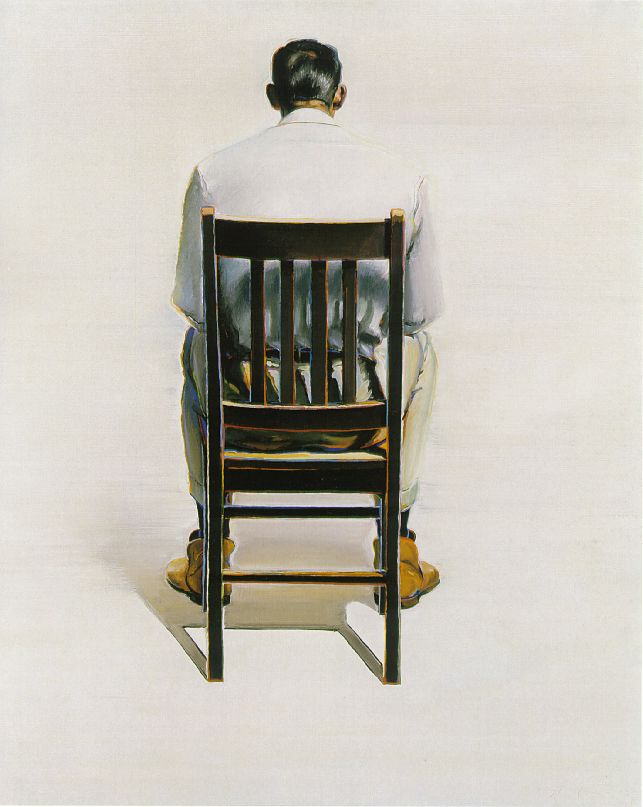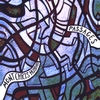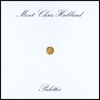
"Man Sitting - Back View" (1964) by Wayne Thiebaud
Click on the painting to open up a larger version in another window.
Click on the painting to open up a larger version in another window.
Recorded on August 12th, 2008, at Magic Closet Studios, in Portland, OR.





1 comment:
I love your response to this. You captured so many things about the painting. When I first saw the work, I just liked the aesthetic. However, when I listened to your piece, it functioned as a led meditation.
First, I further contemplated the aesthetic: I realized that you and Thiebaud had set juxtapositions of classical and modern elements; the painting balances perilously on the line between photorealism and stylization, but the strokes are thick, and the setting is as minimal and bleak as the subject. I heard this in the more classical sounding parts (the opening reminds me of the Debussy that I am working on, and the cadence at about 1:50 ) in the first 2 minutes and the transition to the jazzy/bluesy parts that followed.
Second, I empathized with the sitter. At about 2:48 I couldn’t help but conjure situations in my mind that might leave this man hunched over and hiding. His fine suit mixed with his work boots open almost all possibilities, but to me, the music suggested the death of a loved one, or the contemplation of an old love (especially come 4:45). There is also something about a deep feeling of alienation present in the current human condition as we experience life sandwiched betwixt the emotionally bankrupt everyday tasks of the modern working class.
After that, I went back to the aesthetic in color and setting. Obviously, the white of the man’s suit and the background contrast with the darkness of his lonely slump away from the viewer. They are unlike the loneliness he must feel in a painting with nothing but the chair he sits on, and the shame that makes him hide, isolating himself from the viewer. I feel like you explore these more general artistic and psychological concepts with the broad sounds and unadorned chords (what I mean is that there are chords but no little notes running between) you employ at the end.
Post a Comment